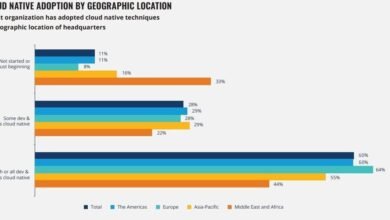Shadow AI: The Hidden Threat to Corporate Security

▼ Summary
– The 2025 State of Information Security Report highlights AI, compliance, and supply chain security as key board-level concerns based on a survey of 3,000 professionals.
– AI adoption is widespread but poorly managed, with 37% of employees using unauthorized generative tools, creating risks like data leaks and compliance violations.
– AI is both a target for attacks such as data poisoning and deepfakes and a tool for defense, with misinformation being the top concern for the next year.
– Compliance pressures are intensifying, with 71% of organizations fined for breaches and many struggling to manage complex regulatory requirements despite prioritizing certifications.
– Supply chain security remains a weak point, with 61% of organizations affected by third-party incidents, leading to increased spending on risk management despite ongoing concerns about smaller suppliers.
Cybersecurity leaders face an expanding digital battlefield, with emerging technologies introducing both powerful tools and unprecedented vulnerabilities. The latest State of Information Security Report 2025 reveals that artificial intelligence, compliance demands, and supply chain weaknesses dominate strategic discussions at the highest corporate levels. Based on insights from over 3,000 security professionals across the UK and US, the study highlights how these interconnected challenges are reshaping organizational defense strategies.
AI has rapidly evolved into a dual-purpose asset, serving as both a critical security resource and a prime target for malicious actors. Nearly 80% of organizations integrated AI or machine learning into their operations within the past year, yet many lack the governance frameworks to manage these tools safely. A particularly alarming trend is the rise of shadow AI, where 37% of employees use generative AI applications without official approval. This unauthorized usage opens the door to accidental data exposure, intellectual property theft, and significant regulatory penalties.
Cybercriminals are increasingly weaponizing AI through techniques like data poisoning, deepfake impersonations, and highly convincing phishing campaigns. Survey respondents identified AI-driven misinformation and disinformation as their foremost concern for the coming year. In response, most organizations are prioritizing investments in AI-enhanced defensive systems, including automated threat detection, content validation, and governance platforms. This reflects a broader recognition that while AI expands potential attack vectors, it also forms the backbone of modern cyber resilience.
Regulatory compliance has become another major pressure point for businesses. A striking 71% of organizations reported receiving fines for data breaches or compliance failures in the last year, with nearly one-third facing penalties exceeding £250,000. Many now view standards such as ISO 27001 and SOC 2 not merely as compliance requirements but as strategic assets that build customer trust, enhance operational decision-making, and facilitate market access. Still, navigating these requirements remains difficult, two-thirds of organizations struggle to manage compliance internally, and smaller firms feel this burden most acutely. Despite these hurdles, nearly all businesses rank achieving or maintaining certifications as a critical objective.
Third-party risk continues to represent a soft underbelly in corporate security postures. Sixty-one percent of organizations experienced negative impacts from a supplier-related security incident in the past year, often resulting in data breaches, financial losses, and reputational damage. New regulations including NIS2, DORA, and the UK’s Cyber Security and Resilience Bill are compelling companies to strengthen oversight of their supply networks. Accordingly, 64% of organizations plan to increase spending on third-party risk management in 2025, and 80% have already enhanced their supplier security programs. However, smaller vendors remain a persistent concern due to inconsistent investment in cybersecurity controls.
(Source: HelpNet Security)





